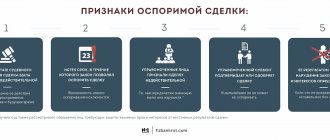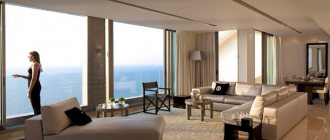The GZHN body refuses to make changes to the register of licenses at the request of the management organization for various reasons, which are then often disputed in court. We are talking about a case that reached the Supreme Court of the Russian Federation, in which the question was considered whether the State Housing Inspectorate was right in considering a two-apartment building to be residential and not multi-apartment.
Why did the RF Armed Forces invalidate some requirements No. 938/pr
1749111
Difference No. 1 – a term from the hotel business
Apartments are non-residential premises. The definition of this concept is contained only in regulations from the hotel business sector.
In accordance with the accepted classification of hotels, the following categories of rooms are established (clause 27, section 2 of the Procedure, approved by order of the Ministry of Culture of the Russian Federation dated July 11, 2014 No. 1215):
- suite,
- apartment,
- luxury,
- junior suite,
- Studio.
The listed types of rooms are not intended for permanent registration, only for temporary stay.
What is the total area for both types of real estate?
Area is the main parameter for carrying out technical inventory and statistical accounting of both types of real estate in the Russian Federation. Calculations for the consumption of utilities, rental housing, and repair work are also carried out based on the value of this indicator.
The total area characterizes the scale of housing construction in the country, represents the basis for determining property taxes, etc.
The instructions on the implementation of accounting operations for housing facilities in Russia (Order of the Ministry of Land Construction of Russia No. 37, dated 08/04/1998) regulate the following:
- The square footage of the apartment includes the area of all residential and utility rooms included in it, together with balconies, unheated storage rooms, loggias, verandas, and vestibules. Utility rooms are combined or separate bathrooms, bathrooms, kitchen spaces, corridors, built-in wardrobes.
- For a residential building, this indicator is the sum of the areas of individual apartments.
- The total area of the dwelling is equal to the sum of all its areas (residential and auxiliary use) with the exception of the space on the balcony, terrace, veranda or loggia according to the Housing Code of Russia - Article 15, paragraph 5). The cadastral passport indicates this type of property characteristics. It is also a characteristic of the object entered into the register of rights.
- The total area indicator for a building is calculated by summing similar values for all apartments.
- The area of living rooms in an apartment constitutes its living area, and the apartment-by-apartment values of this value for the entire house constitute its living area.
The design parameters of the premises are determined by measurements and taken into account to one decimal place. Payment for utility services for non-residential premises, with property rights registered to a certain person, is made on the same basis as for residential premises. The determining factor, in this case, is their total area including loggias, terraces, and balconies.
The indicator is determined by summing the square footage of all rooms, which are a single whole. When calculating, area reduction indices are used : for terraces and balcony spaces - 0.3, and 0.5 - for loggias. The measurement results taken on the inner surface of the external load-bearing walls form the basis for the calculation.
Difference No. 3. Two control options
If everything is clear with residential premises, there are two control options for apartments:
1. The developer sells the apartments, but the common property does not remain the property of anyone.
In this case, by analogy with the provisions of the Housing Code of the Russian Federation, such property becomes the common property of the apartment owners. By analogy with the housing complex of the Russian Federation, apartment owners gather at a general meeting of owners, choose a management organization, discuss the essential terms of the management agreement and begin to manage the common property of the apartment building.
Actions by analogy were supported by the Plenum of the Supreme Arbitration Court of the Russian Federation in Resolution No. 64 dated July 23, 2009.
With the first management option, not all articles of the Housing Code of the Russian Federation will apply by analogy. For example, Art. 158 of the Housing Code of the Russian Federation, which states that if the owners have not set tariffs, then they must be approved by local government bodies, will not apply, because the compulsory medical insurance does not have the obligations and powers to set tariffs for non-residential premises.
2. The developer sells the apartments, but leaves the common areas as his property.
If all common areas remain the property of the developer, he independently selects the management organization and all essential terms of the contracts. Owners are faced with a no-alternative decision; they have no right to choose.
Article 7 of the RF Housing Code will not be applied in this case, because an analogy of legislation is unacceptable if it contradicts the essence of the relationship.
The decision of the Khostinsky District Court of Sochi dated July 15, 2011 noted that the disputed premises (apartments) “... cannot be considered by the court as residential due to the fact that, in accordance with the current legislation of the Russian Federation, an apartment is a room in an accommodation facility.”
Also, the Federal Antimonopoly Service of the Ural District indicated that “hotels do not belong to the housing stock, and the premises located in them do not belong to residential premises” (resolution dated August 23, 2010 No. F09-5956/10-S6 in case No. A50-3584/2010).
Explanations of the RF Armed Forces on the maintenance of common property in apartment buildings
324880
Amount of subsidy provided
The subsidy is provided in an amount not less than:
- 30 percent of the estimated cost of housing - for young families without children;
- 35 percent of the estimated cost of housing - for young families with one child or more, as well as for single-parent young families consisting of one young parent and one child or more.
That is, a family without children can receive 30 percent of the cost of housing free of charge from the state. We are talking about the estimated cost of housing. How is this cost determined?
The estimated cost of housing used to calculate the amount of the subsidy is determined by the formula:
StJ = N x RJ,
Where:
N - standard cost of 1 sq. meters of total housing area;
This standard is set by local authorities and cannot be higher than the average market value of 1 sq. m. meters of housing for this subject.
RZh - the size of the total area of the living space.
The size of the total living area is:
- for a family consisting of 2 people: young spouses or one young parent and child - 42 sq. meters;
- for a family consisting of 3 or more people, including, in addition to young spouses, one child or more, or a family consisting of one young parent and 2 or more children - 18 sq. meters per person.
It is clear that the estimated cost of housing will vary greatly by region, because the cost of 1 sq. m. meters of housing in Moscow is not comparable with the cost of housing in the provinces.
For example, the standard cost of one square meter of total living space in the Chelyabinsk region is 33,070 rubles, in the Krasnodar Territory - 46,811 rubles. In the Moscow region - 110,087 rubles (Order of the Ministry of Construction and Housing and Communal Services of the Russian Federation dated June 29, 2020 No. 351/pr “On the standard cost of one square meter of total living space in the Russian Federation for the 2nd half of 2021 and indicators of the average market value of one square meter of total area of residential premises by constituent entities of the Russian Federation for the third quarter of 2020").
As we see, the standard cost of housing is much lower than its real market value, which ultimately leads to the family paying extra for the difference between the market and standard cost per square meter.
Difference No. 4. Tax burden
Often, owners who have purchased apartments are surprised to learn that, according to paragraph 1 of Art. 401 of the Tax Code of the Russian Federation, apartments do not belong to housing, but belong to other types of non-residential property. Accordingly, according to paragraphs 3 and 4 of Art. 403 of the Tax Code of the Russian Federation there will be other deductions, and tax benefits do not apply to non-residential premises.
Judicial practice on the legal status of apartments is contradictory. In court decisions you can even find the term “residential apartments”, for example, in the appeal ruling of the Voronezh Regional Court dated November 19, 2013 No. 33-5878. This concept is not approved by law.
Signs characteristic of each category
So, what are the main features that allow us to differentiate them from each other, and what are they?
Dwellings are characterized by features that provide the possibility of normal life in these objects:
- immovable nature of property;
- availability of rooms;
- the location of auxiliary units in them to provide citizens with living and other conditions;
- equipping houses with an elevator - for buildings with more than five storeys;
- the presence of an isolated circuit, but with the possibility of access to common areas - to the corridor, to the stairs, to the yard;
- providing housing with the necessary utility rooms for its maintenance.
According to Article 16 of the Code of Legislative Acts on Housing - the Housing Code of Russia - the main types of residential premises include a house or a certain element of household ownership, a room, an apartment (or part thereof).
The classification of housing allows us to divide it into places of permanent and occasional (non-permanent) use as a habitat. The first type includes dwellings that are state (municipal) property, as well as those belonging to citizens or included in a housing cooperative or residential complex.
The second category is represented by rented premises, sublease facilities, dormitories, and office housing, which must be vacated after a while.
Non-residential built-in and attached parts of residential buildings or elements of non-residential complexes are characterized by:
- signs of their isolation;
- attitude towards real estate;
- purpose - not for human habitation, but to ensure social or production purposes;
- location - in residential and non-residential buildings, which distinguishes them from buildings;
- suitability for use in accordance with the requirements of regulatory documents.
Just like housing, non-residential premises must be registered as real estate . Such real estate implies the possibility of its use either as a separate object, or to provide auxiliary needs of the main one. The category of main non-residential space, for example for a clinic, consists of medical and diagnostic offices, chemical and biological laboratories, and physical treatment rooms.
The main functions of the clinic are served by auxiliary spaces of the cloakroom, corridors, toilet rooms, lobby, etc. In the rented premises of the institution there are other auxiliary isolated areas, the purpose of which differs from the main direction of the entire non-residential facility. These are shopping pavilions, pharmacies and other spaces arranged under a contract.
A country house is a residential or non-residential premises
In Art. 3 Federal Law No. 217-FZ states what a country house is by law. It is intended for seasonal rather than permanent residence of citizens. Formally, you can live there all year round, if there is at least electricity, but legally neither permanent residence nor registration is allowed in a garden house.
Before the entry into force of Federal Law No. 217-FZ, the laws still included the concepts of “dacha” and “dacha plot”. These have now been abolished, and “garden houses” and “garden plots” are used instead.
Note! The status of the house depends on when it was registered in the Unified State Register of Real Estate - before or after 01/01/2019.
Registered until 2021
If the dacha was registered as a property before 01/01/2019 and received the status of a residential property, nothing needs to be re-registered after Federal Law No. 217-FZ comes into force. If it was initially listed as non-residential, but you want to re-register the status, you will have to do this yourself. Otherwise, the object will be listed as a “garden house”.
Registered after 2021
If the house was built on a garden plot after 01/01/2019, to obtain residential status you need to contact the administration with documents. Without this, it will have the status of a garden house, where registration and permanent residence are impossible.
Definition, concept and classification of residential and non-residential real estate: what is it?
One of the main concepts in this area is the definition of “real estate”. Part 1 art. 130 of the Civil Code of the Russian Federation classifies as real estate land plots, subsoil plots and everything that is inextricably linked with the land, that is, objects whose movement without damage to them is not possible. This standard includes buildings, structures, and unfinished construction projects.
The exact definition of the concepts “building” and “structure” is established by the Federal Law “Technical Regulations on the Safety of Buildings and Structures” dated December 30, 2009 No. 384-FZ.
- A building is the result of construction, which is a volumetric system with above-ground and (or) underground parts, including premises, engineering support networks and engineering support systems for living and (or) activities of people, production location, product storage , says sub. 6 paragraph 2 art. 2 of the above Regulations.
- A structure is a result of construction, which is a volumetric, planar or linear construction system, having ground, above-ground and (or) underground parts, consisting of load-bearing and enclosing building structures, for performing various production processes, storing products, moving people and goods, it is said in sub. 23 clause 2 art. 2 Regulations.
The concept of the term “structure” remains open. Analyzing the entire regulatory framework governing the interaction of these terms “building” and “structure”, the term “structure” can be characterized as follows:
- A structure is any structure made by construction, inextricably linked to the earth's surface.
- A room is a part of the volume of a building or structure that has a specific purpose and is limited by building structures, in accordance with subclause. 14 paragraph 2 art. 2 Regulations.
All objects of this type of real estate can be classified on several grounds (Table No. 1).
Table No. 1:
| By type of ownership | By industry | According to the degree of readiness for operation | By purpose |
| Private | Industrial | Put into operation | Residential |
| State | Construction | Construction in progress | Commercial |
| Collective | Cultural and everyday life | Requiring reconstruction | Municipal |
| Public organizations | Housing and communal services | Not put into operation | Special |
Objects of this type of real estate also have a number of certain characteristics (Table No. 2).
Table No. 2:
| Signs of residential premises | Signs of non-residential premises |
| Suitable for permanent residence, meets all sanitary and technical standards. | Unsuitable for permanent residence, does not meet sanitary and technical standards for residence. |
| Has the communications necessary for living. | Communications are partially carried out or absent. |
| Used only for residential purposes. | Can be used for commercial purposes. |
| Availability of registered citizens. | There are no registered citizens. |
| Included in the housing stock. | Included in the non-residential fund. |
Common features for both types of premises:
- They are real estate.
- An inextricable connection with the land plot on which they are located.
- Isolation.
- Durability.
- Uniqueness.
- Variety.
- Materiality.
- Cost form.
- Inability to move in space.






